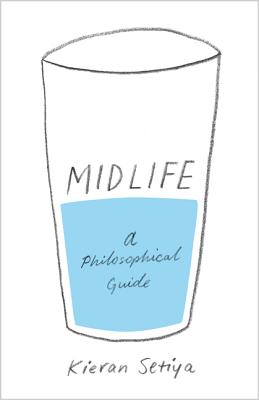Midlife: A Philosophical Guide
Kieran Setiya

This is an excellent book of modern philosophy. A year or more ago, my dad (a philosophy professor) sent me a link to Setiya’s essay “The Midlife Crisis” (http://www.ksetiya.net/uploads/2/4/5/...), which is the seed of this book. I greatly enjoyed the essay, and looked forward to the book version when I found out it was in the works.
I’m 32, so probably at the very young end of what anyone would consider middle-aged. (My dad expressed some shock when this came up in my update feed!) But the ideas Setiya speaks to still feel meaningful to me. I’d guess they would probably feel meaningful to anyone who has more or less established an adult life for themselves. For me, the “feelings of midlife” are probably about the best they could possibly be, and maybe similar to Setiya’s own: I’ve finished grad school and probably won’t get any more degrees, I’ve found a life partner and gotten married, I have a career that is interesting, seems worthwhile, and pays more than I think I need. These things together render a sense of emptiness in the mere succession of achievement of desires.
(I should note that these types of feelings are something for which religion, a belief in a higher power, might be seen as an answer, not to mention that it might help with the prospect of mortality. I don’t remember Setiya ever mentioning religion, and the book more or less proceeds on atheistic grounds. That works for me!)
Setiya writes in a style that is just about perfect for me. The closest comparison I can think of is reading Epictetus, the Stoic philosopher. Both of these writers are doing philosophy that is explicitly therapeutic; that is, geared toward helping the reader live her life in a better way. The style is fairly simple and approachable, no more difficult than your average intellectual book of popular nonfiction. Setiya draws on earlier philosophers at times, particularly Schopenhauer, but is mainly happy to give his own perspectives. Despite all this, he also proceeds in a fairly careful, analytical style, considering and rejecting or accepting various specific explanations, then assessing the reasonableness of various approaches to addressing those he selects as likely. He defines special terms a couple of times, but only as needed, and they generally seemed to facilitate understanding rather than impeding it.
I also found the content useful, if not 100% settling any sense of unease. Setiya talks at some length about Schopenhauer’s critique of a project-oriented life–either you are unhappy because there is goal you wish to obtain and have not yet obtained, or you have achieved your goal, in which case you are directionless and lack meaning. In this view, life is a continual treadmill of lacking and extinguishing. Setiya’s response is to draw a distinction between “telic” and “atelic” activities: those that are pursued in order to achieve some end, and those that are pursued as valuable in and of themselves. Examples of atelic activities might be walking in nature, talking with friends, or listening to music. But there are also atelic aspects of almost any activity. A good example, which Setiya doesn’t mention, is training for a marathon or other race. You might view the training as an unfortunate cost to be paid in order to achieve the goal of finishing a marathon, or you might view the marathon as a means to getting yourself to go outside and run, which is itself intrinsically good. In Setiya’s view, orienting our lives toward a more atelic perspective is an effective way of responding to the midlife crisis.
The essay version of this book focuses primarily on the telic/atelic distinction. The book version is padded out with more extended consideration of several other related topics, including the fear of death, regret for lives we didn’t live, and regret for mistakes we made in the past. These sections of the book are also characteristically thoughtful, but for the most part, didn’t speak to me as much. More than anything, I take this to mean that the “succession of projects” aspect of the midlife crisis is the one that I personally feel the most. The “FOMO” section on lives we didn’t choose does contain a view that I found very meaningful, though. Setiya says that one of the aspects of midlife regret is that human life offers such a plurality of values. While this can lead to some painful feelings, Setiya encourages us to take a broader perspective by understanding that this very plurality is a large part of what makes human life rich and worth living. We could only rid ourselves of this sense of tradeoff by drastically narrowing the scope of our interests and experiences, and this, he submits, would be far from worth it.
I came away from this book with some ideas that I now regularly call to mind, and that is very high praise. I hope Kieran Setiya gets a good reception for this book, and decides to write more for a general audience! If the ideas sound interesting to you, I recommend reading first the essay I linked above, and if you like it, getting the book!